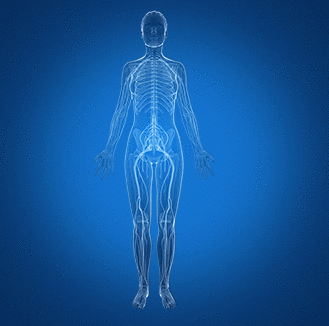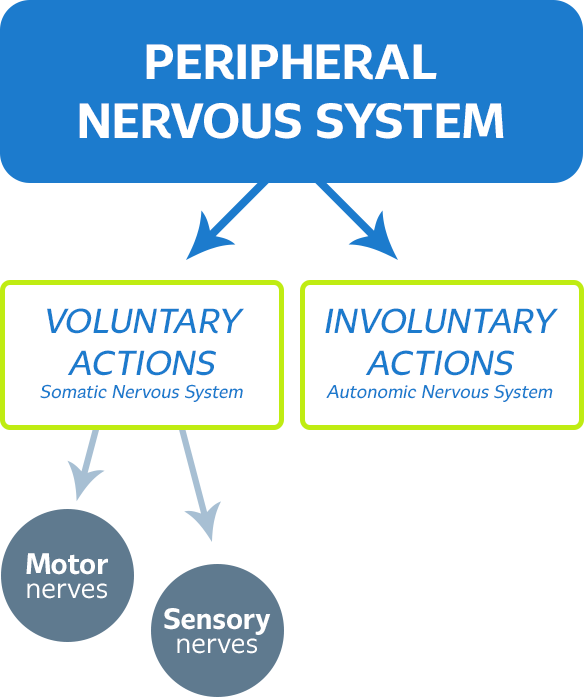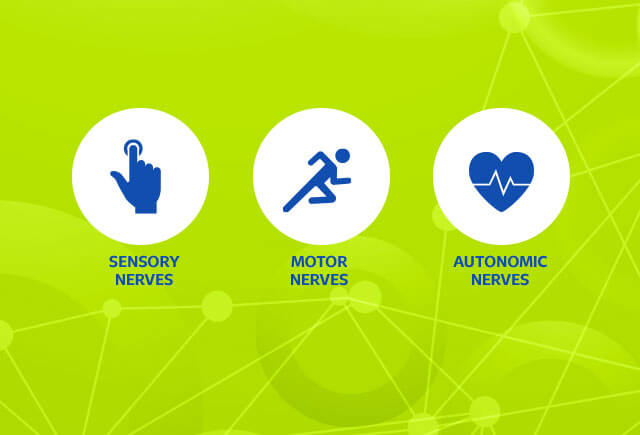How does the nervous system work?
The nervous system is the part of our body that helps us not only to perceive, comprehend and respond to the world around us, but also send, receive and interpret information from all parts of our body. In fact, the nervous system monitors and coordinates both voluntary actions, like walking, that we consciously decide to do and involuntary actions, like breathing and digestion, that happen without our specific decision.

Nerve cells, called neurons, are the cells that constitute the nervous tissue of which the nervous system is made. They work by a mixture of chemical and electrical action, allowing the transmission of signals in our body.
Simple components for a complex assembly
The peripheral nervous system is made of millions of nerves, called peripheral nerves, linked to each other or to muscles or to receptors throughout our body.
You can think of it as a series of electrical wires or telephone lines connecting your brain and body, allowing them to communicate.
The nerve fiber is like a wire transmitting impulses through the body.
These fibers are covered by a substance called myelin. Myelin protects the nerve fibre and helps the messages go fast through the neurons.
Nerves are always “at work” and have different directions, for example, when you touch a hot plate, some nerves send the information from your fingers to the brain (central nervous system) to perceive the sensation of heat. When your brain receives that information it elaborates the order of withdrawing the finger. Other nerves bring this message to the muscle of the hand. The result? You don’t get burned!
Direction is not the only way to classify nerves, their specific function is also very important. Each group of nerves “knows” exactly what to do:
- the motor nerves coordinate voluntary body movement stimulating your muscles.
- the sensory nerves react to outside inputs and allow you to feel sensations such as heat, cold and pain;
- the autonomic nerves regulate involuntary functions like heartbeat, sweating and digestion, and influence the activity of internal organs.


